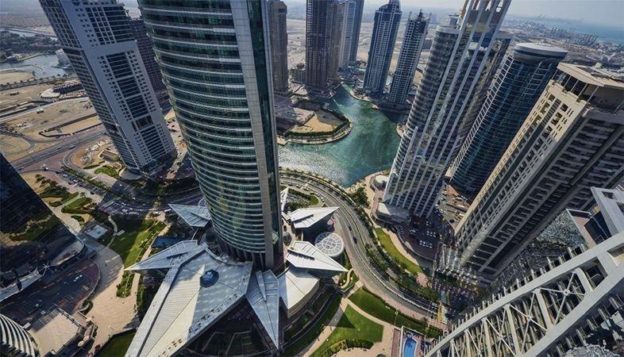Gulf sovereign wealth funds are expected to become more active and play an even bigger role in global markets this year as they receive large capital injections derived from higher oil revenue, an annual industry report has revealed.
Of the top 10 most active sovereign investors in 2022, five were from the Gulf region, according to industry specialist Global SWF.
Singapore’s GIC led the top 10 list of state-owned investors, with $40.3 billion invested in 2022, 17 per cent more than in 2021.
It was followed by the Abu Dhabi Investment Authority and Saudi Arabia’s Public Investment Fund.
Also in the top 10 were Abu Dhabi’s Mubadala Investment Company and holding company ADQ, followed by the Qatar Investment Authority.
“We are expecting to see an increasing activity and role of Gulf SWFs in the global markets,” said Diego Lopez, founder and managing director of Global SWF. “Middle Eastern SWFs are readier than ever to shine.”
Overseas, they more than doubled their investments in western economies, including the US and Europe, to $51.6 billion in 2022, from $21.8 billion in 2021.
In 2023 and beyond, Middle Eastern sovereign investors will probably continue to be “very active” in Europe and North America, where there will be many opportunities to buy listed equities or direct stakes, to pursue co-investments or buy into private equity firms, and to find distressed portfolios, the report said.
:quality(70)/cloudfront-eu-central-1.images.arcpublishing.com/thenational/QEAN36TZVNE4JDNRK3FTGMGV2U.png)
Globally, state-owned fund activity was strong in 2022 as more capital was invested, albeit through fewer deals, than was in 2021.
State-owned investors poured $261.1 billion in 747 deals in 2022, compared with $229.9 billion from 890 transactions during 2021, the report showed.
This means sovereign wealth funds invested 38 per cent more year on year, with $152.5 billion in 427 transactions, while public pension funds invested 9 per cent less, with $108.6 billion in 320 deals.
The reduction in venture capital and the increase of mega deals meant that the average ticket of the year was about $350 million, which had not been recorded in more than five years, the report said.
The strong performance of state investors was in defiance of the severe global market turbulence last year.
After three years of gains, US markets ended the year on Friday with their worst yearly performance since the 2008 financial crisis.
The benchmark S&P 500, which measures the performance of about 500 US companies, fell by about 20 per cent in 2022.
The technology-heavy Nasdaq Composite, which assesses the performance of more than 3,000 securities listed on the Nasdaq stock market, lost a third of its value during the year.
The blue-chip Dow Jones Industrial Average, which measures the daily price movements of 30 large American companies on the Nasdaq and the New York Stock Exchange, ended about 9.4 per cent lower.
Steep declines in stock and bond markets have, for the first time, cut the collective value of global sovereign wealth funds and public pension funds, which fell 6.5 per cent to $31.4 trillion from 2021, the report showed.
The value of assets managed by sovereign wealth funds fell to $10.6 trillion in 2022, from $11.5 trillion in 2021, while those managed by public pension funds dropped to $20.8 trillion, from $22.1 trillion, Global SWF said.
The major challenge of 2022 was the “simultaneous and significant” corrections of bonds and stocks, which had not happened in 50 years and which drove the decline in fund values, the report said.
“These are paper losses and some of the funds will not see them realised in their role as long-term investors, but it is quite telling of the moment we are living,” Mr Lopez said.
In terms of industries, the activities of state-owned funds reflected economic changes.
The funds lost interest in health care, consumer and technology, and whetted their appetite for infrastructure (mostly transport), energy, industrials and financials assets. Meanwhile, property remained constant.
Investments in renewable energy outpaced spending on fossil fuels, with funds investing $18.7 billion in 51 green deals, compared with $6.7 billion in 11 traditional energy deals, in 2022.
Global SWF awarded the fund of the year title to Canada’s CDPQ, which was received by its chief executive Charles Emond, after it increased its assets under management consistently over the past 15 years.
Hedge funds were declared the leading asset class of the year, following an sharp increase in the interest of and allocation of sovereign investors.
In 2022, the average allocation of sovereign investors to hedge funds reached a high of 2 per cent, up from 1 per cent in 2009.
Indonesia was named the region of the year after it experienced an increasing flow of investors due to the country’s continuing economic transformation and strong prospects.
Infrastructure, including energy-related assets, was declared the industry of the year.
:quality(70)/cloudfront-eu-central-1.images.arcpublishing.com/thenational/VF5KSZXGPRGBBF225MN3JDZTZA.jpg)
The report expects 2023 to be a “very busy year” for sovereign investors.
“In terms of regions, we expect Asia, in general, and certain emerging countries to be of interest for sovereign investors, but the revaluation or further devaluation of the world’s currencies against the US dollar may affect the geographical allocation,” the report said.
State investors must prepare for “major challenges and disruptions ahead” in 2023, namely in geopolitics, senior Global SWF adviser Andrew Rozanov said.
Stubborn inflation, rising interest rates, a strong US dollar, a looming recession, cost-of-living crises and growing inequality, coupled with domestic political risks, all point to much higher levels of uncertainty and volatility in the coming period, he said.
Meanwhile, the industry outlook for 2023 remains gloomy amid growing concerns about a new recession and high geopolitical risk in a multipolar world, the report said.
However, the sector is set to grow to $50 trillion by 2030, and this will probably be led by Saudi Arabia’s PIF.
:quality(70)/cloudfront-eu-central-1.images.arcpublishing.com/thenational/AHDHTBL74ZB7PA6AFFWI2AQSIQ.jpg)





